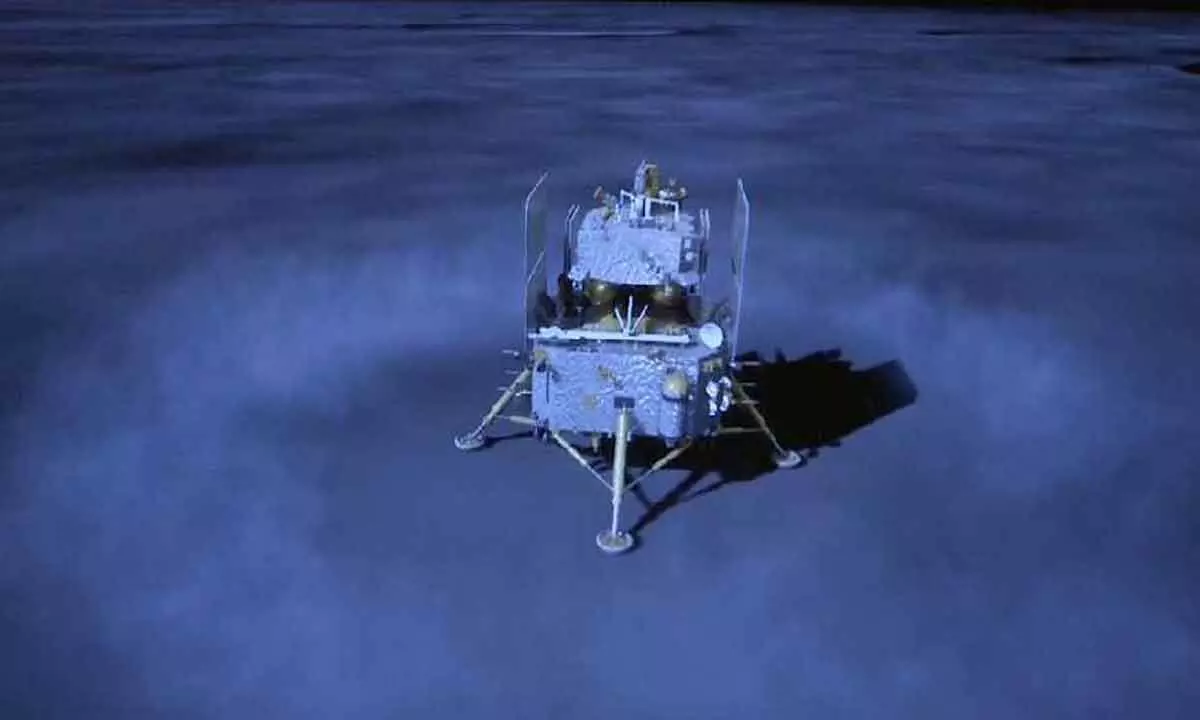Chang'e-6 lands on Moon will collect samples on its far side
It consists of an orbiter, a returner, a lander, and an ascender
image for illustrative purpose

Beijing: China's Chang'e-6 touched down on the far side of the Moon on Sunday morning and will collect samples from this rarely explored terrain for the first time in human history, the China National Space Administration (CNSA) announced.
Supported by the Queqiao-2 relay satellite, the lander-ascender combination of the Chang'e-6 probe successfully landed at the designated landing area at 6:23 a.m. (Beijing Time) in the South Pole-Aitken (SPA) Basin, Xinhua news agency reported.
Chang'e-6 consists of an orbiter, a returner, a lander, and an ascender.
Since its launch on May 3 this year, it has gone through various stages such as Earth-Moon transfer, near-Moon braking, lunar orbiting, and landing descent. The lander-ascender combination separated from the orbiter-returner combination on May 30, said the CNSA.
The lander-ascender combination began the powered descent at 6:09 a.m. The main engine with variable thrust was ignited, and the combination quickly adjusted its attitude and gradually approached the lunar surface.
During the descent, an autonomous visual obstacle avoidance system was used to automatically detect obstacles, with a visible light camera selecting a comparatively safe landing area based on the brightness and darkness of the lunar surface.
The combination then hovered about 100 metres above the safe landing area, using a laser 3D scanner to detect obstacles on the lunar surface to select the final landing site before a slow vertical descent.
As the combination approached the lunar surface, it shut down the engine and touched down via free fall, protected by a cushioning system.
The Chang'e-6 mission is tasked with collecting and returning samples from the moon's far side, the first endeavour of its kind in the history of human lunar exploration.
It has achieved a breakthrough in the design and control technology of the lunar retrograde orbit and aims to realise key technologies of intelligent and rapid sampling, as well as takeoff and ascent from the far side of the moon, the report said.
The landing site is at an impact crater, Apollo Basin, located within the SPA Basin.
The choice was made for the Apollo Basin's potential value of scientific exploration, as well as the conditions of the landing area, including communication and telemetry conditions and the flatness of the terrain, said Huang Hao, a space expert from the China Aerospace Science and Technology Corporation (CASC).
Huang added that the terrain on the far side of the moon is more rugged than the near side, with fewer continuous flat areas.
However, the Apollo Basin is relatively flatter than other areas on the far side, which is conducive to landing.
The lander is equipped with multiple sensors, including microwave, laser, and optical imaging sensors, which can measure distance and speed and identify obstacles on the lunar surface, Huang said.

